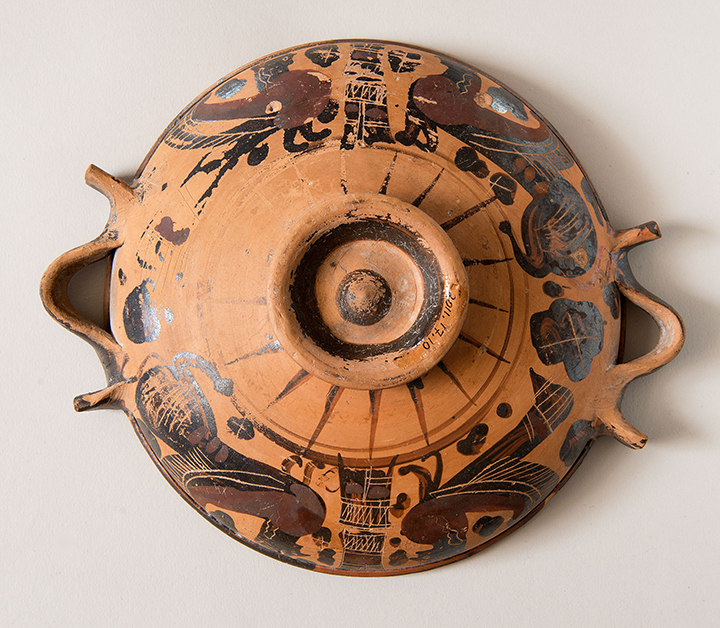Ancient Greek Vessels
Pattern and Image
May 22–September 26, 2015
In ancient Greece, ceramic vessels were used for a variety of purposes, from storing food and drink and rewarding Olympic champions, to marking graves in cemeteries and decorating dining rooms. This exhibition considers the nature and function of ceramic vessels from Greece and Cyprus. The Cypriot vessels in this exhibition date from the Late Bronze Age and Early Geometric period. Their shape and decoration reveal the role of Cyprus as a center for trade, which encouraged the development of specific types of vessels to indicate their nature and origin.
The vessels from Greece come from the fifth and fourth centuries BC and were produced in the region around Athens. During this time, Greece was experiencing what can be called a “golden age,” characterized by the flourishing of writing, philosophy, and art. The highly refined nature of the decorations and the inclusion of figurative and narrative elements illustrate the dominant role of Athens in the producing of fine ceramic ware.
By examining the relationship of the vessel shapes to their decorations, viewers can examine key questions: what were the functions of specific ancient Greek and Cypriot ceramics? Did decorative design interplay with shape and function, and if so, how?
These works are on loan from Bryn Mawr and Wilson colleges.
This exhibition is a curatorial project by archaeology major Sarah Eisen ’15.






























